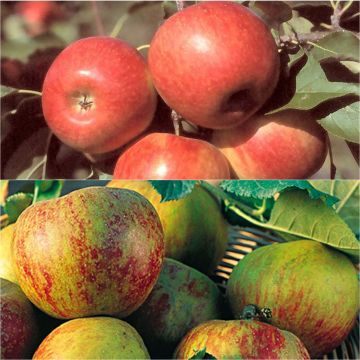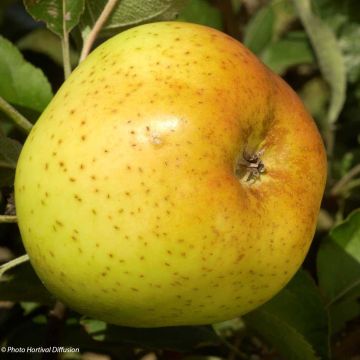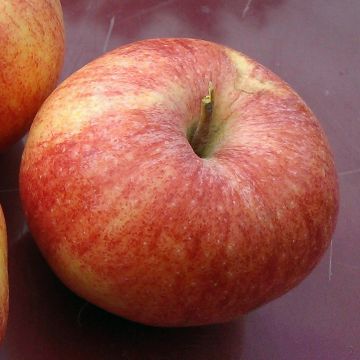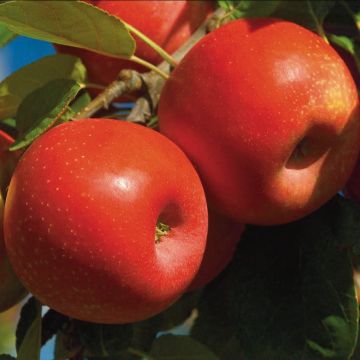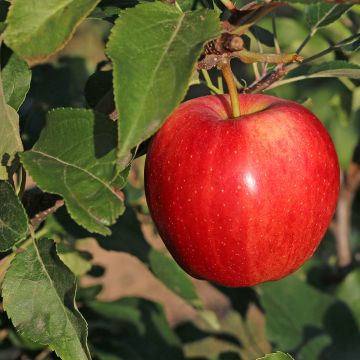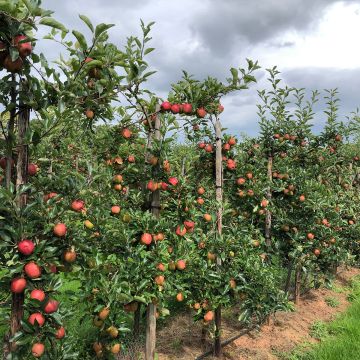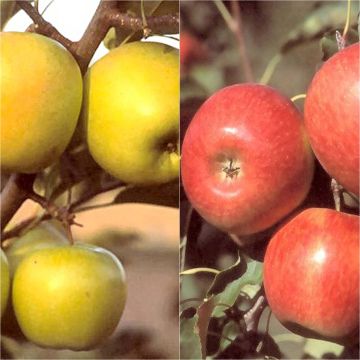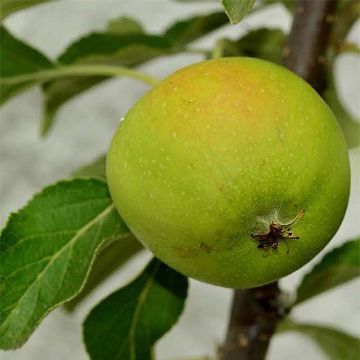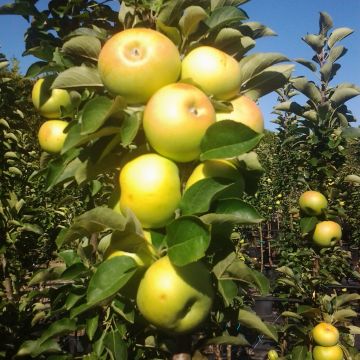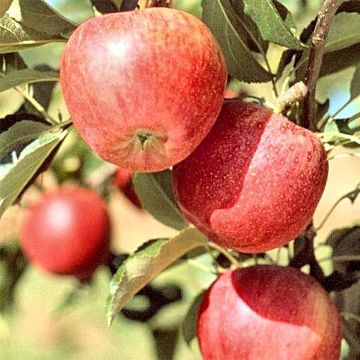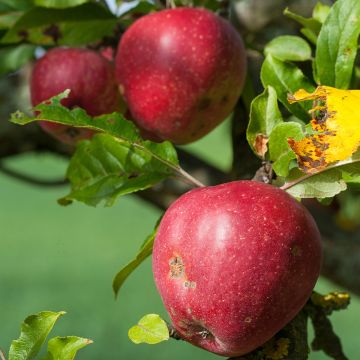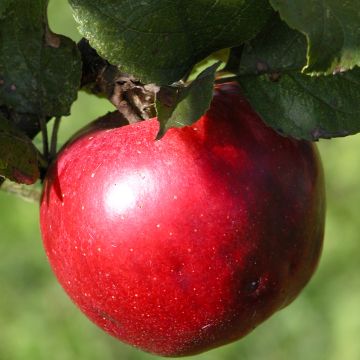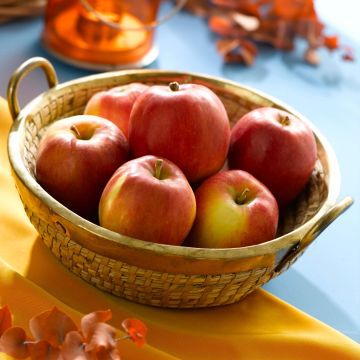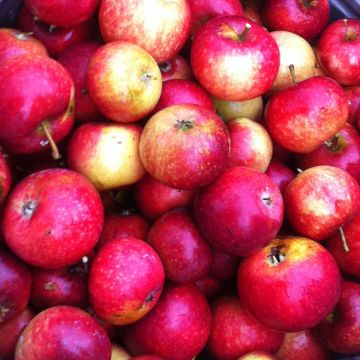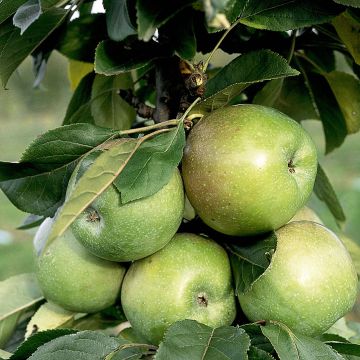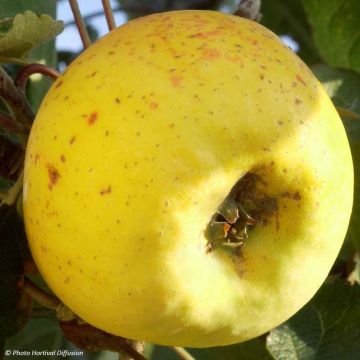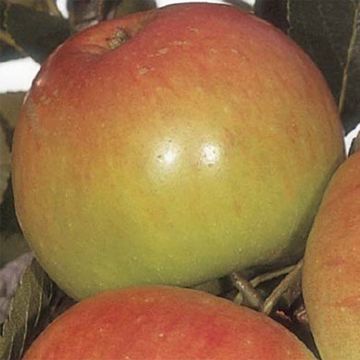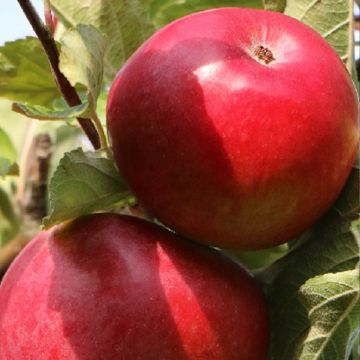Shipping country and language
Your country of residence may be:
Your country of residence is:
For a better user experience on our website, you can select:
Your shipping country:
-
Andorra
-
Austria
-
Belgium
-
Bulgaria
-
Canada
-
Chile
-
Croatia
-
Cyprus
-
Czechia
-
Denmark
-
Estonia
-
Finland
-
France
-
Germany
-
Greece
-
Hungary
-
Iceland
-
Ireland
-
Italy
-
Latvia
-
Lithuania
-
Luxembourg
-
Malta
-
Monaco
-
Netherlands
-
Poland
-
Portugal
-
Romania
-
Slovakia
-
Slovenia
-
Spain
-
Sweden
-
Switzerland
-
United Kingdom
We only deliver seed and bulb products to your country. If you add other products to your basket, they cannot be shipped.
Language:
-
French
-
German
-
Spanish
-
English
My Account
Hello
My wish lists
Log in / Register
Existing customer?
New customer?
Create an account to track your orders, access our customer service and, if you wish, make the most of our upcoming offers.
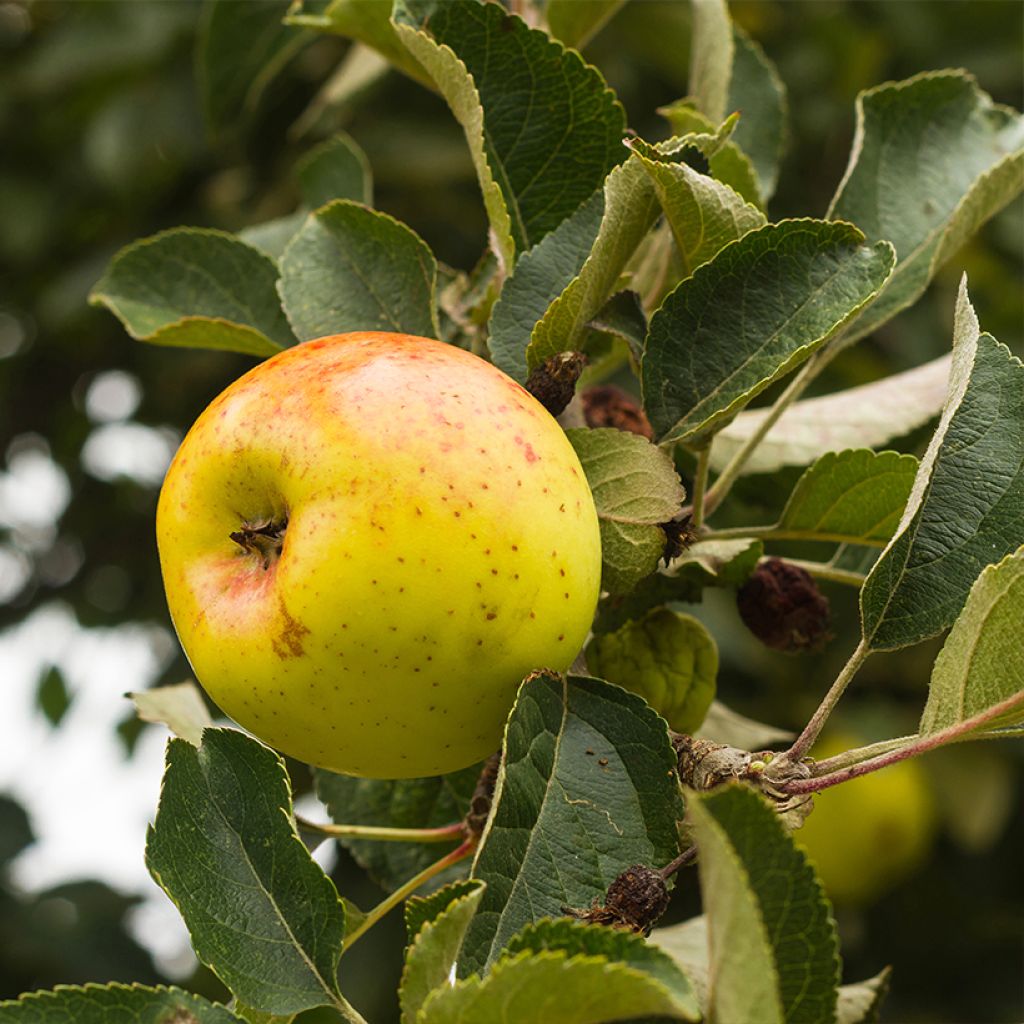

Pommier Bonne Hotture
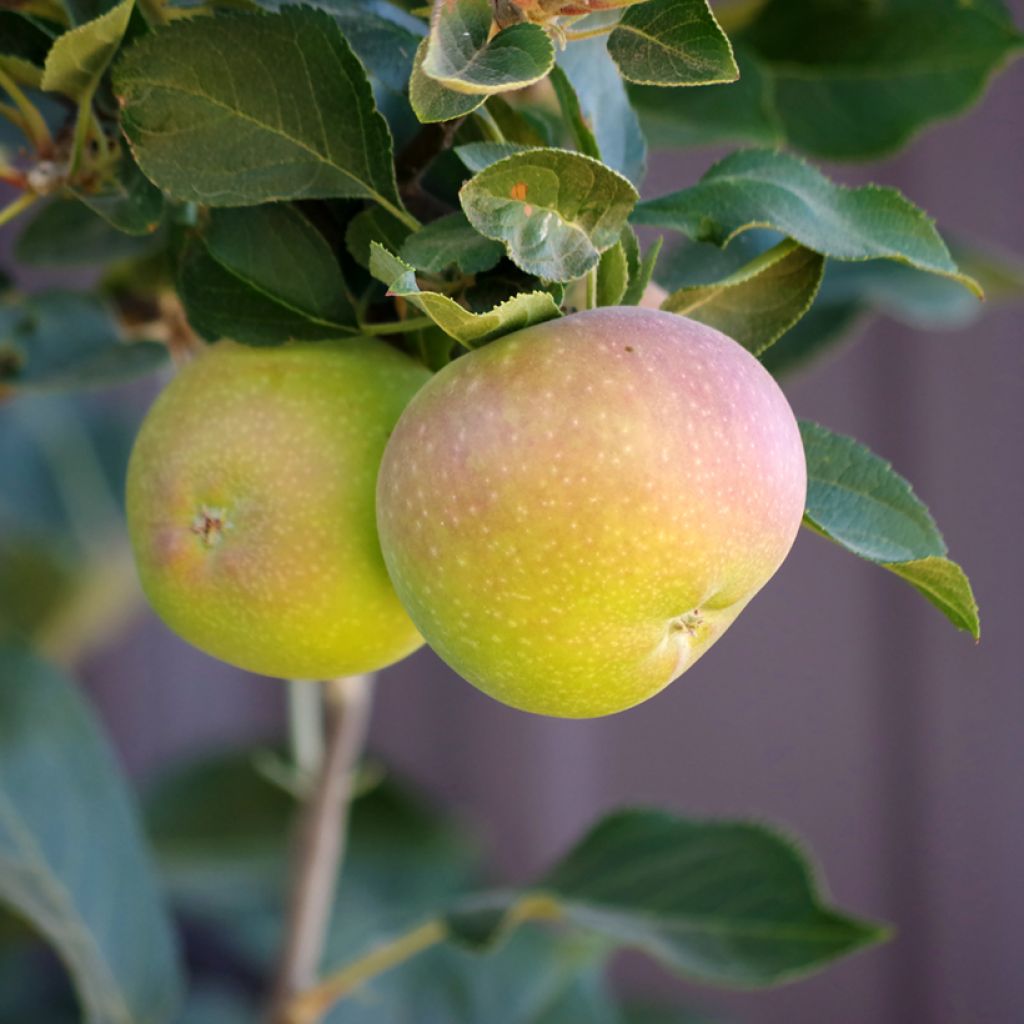

Pommier Bonne Hotture
Apple Tree Bonne Hotture - Malus domestica
Malus domestica Bonne Hotture
Apple, Orchard apple, Table apple, Cultivated apple
Why not try an alternative variety in stock?
View all →Order in the next for dispatch today!
Dispatch by letter from €3.90.
Delivery charge from €5.90 Oversize package delivery charge from €6.90.
More information
This item is not available in your country.
Schedule delivery date,
and select date in basket
This plant carries a 6 months recovery warranty
More information
We guarantee the quality of our plants for a full growing cycle, and will replace at our expense any plant that fails to recover under normal climatic and planting conditions.
Oversize package: home delivery by special carrier from €6.90 per order..
Express home delivery from €8.90.
Description
The Good Hotture apple tree is an old variety, more commonly found in Anjou, known for the excellent quality of its fruits, which are resistant to impact and can be stored for a long time. It produces a round-shaped apple, slightly flattened at the poles, with a medium size, thick and rough skin. The green skin turns yellowish when ripe, with light red colouring when exposed to sunlight, punctuated and striated with russet on the periphery, and sprinkled with green-brown in the peduncular cavity. The white flesh is semi-tender, crunchy, juicy, sweet, and pleasantly acidic. In November, the fruits can be consumed immediately after harvest and stored until March if picked late and stored under optimal conditions. It is a delicious apple to eat raw. When cooked, it is appreciated in many sweet and savoury recipes. It is a self-sterile variety that requires the presence of other apple varieties for pollination.
The Malus domestica, also known as Malus communis or Malus pumila, is commonly called the Common or Domestic apple tree. It belongs to the Rosaceae family. Present in France and Europe since ancient times, it is a fruit tree native to the forests of Central Asia. It has excellent hardiness and is probably Northern Europe's most cultivated fruit tree. There are about 20,000 varieties, including approximately 10,000 of American origin, 2,000 of English origin, and 2,000 of Chinese origin. The Good Hotture apple tree, also known as Bonne Auture or Bonne Hotture, is probably native to Anjou and has been widespread since the late 19th century. André Leroy (1801-1875), an Angevin nurseryman, hypothesized that the name Bonne-Hotture probably came from the fact that it was often transported in baskets carried on men's backs.
The Good Hotture apple tree is a spreading fruit tree with a well-developed structure, giving it a harmonious silhouette. It can reach approximately 5m (16ft) in height and 4m (13ft) in width when fully grown. Its habit is suitable for low or tall forms and espaliers. Its foliage consists of large, ovate leaves, green-brown on the upper side, whitish-green on the lower side, and deeply dentate. The flowering, which occurs in mid-late April, usually avoids frost. The flowers are destroyed by frost at temperatures below -2 to -3 °C (28.4 to 26.6°F). Its abundant flowering is remarkably decorative in spring and highly attractive to bees. Despite its vigour, this variety produces poor-quality pollen, making it very poor at pollinating itself or other apple varieties. It produces apples with few or no fertile seeds. It is said to be self-sterile, which is why it is necessary to have apple trees flowering at the same time. Varieties such as Court Pendu, Cox Orange, Golden Delicious, Granny Smith, Reinette Clochard, Reine des Reinettes, Reinette Etoilée, Royal Gala, or any other mid-late flowering variety are suitable for cross-pollination. Ornamental apple trees such as Perpetu Evereste and John Downie bloom abundantly and can be excellent pollinators.
The Good Hotture apple tree is a moderately vigorous fruit tree with a slow fruiting process, highly fertile, productive, susceptible to scab, but overall resistant to diseases. It is weakly alternate bearing, meaning it produces abundant crops every year.
A juicy and sweet apple that can be consumed raw and cooked in compotes, pastries, paired with cheese, or as an accompaniment to savoury dishes such as black pudding, pork, or salads. It is also perfect for making excellent juice. Easy to consume, apples provide an incredible feeling of satiety. Rich in carbohydrates and fructose, they are invigorating, energising, and hydrating. Their content of vitamins A, B, C, and E, minerals, antioxidants, and fibre makes apples a health asset. The fruits can be stored throughout the winter, even until March, if picked late. Storage can be done in a cool, clean place, protected from light, at a temperature of around 8 to 10°C (46.4 to 50°F), or in a cold room, sealed from outside air, at a temperature of 1 to 3°C (33.8 to 37.4°F). Apples release ethylene, a gas that promotes fruit ripening. Place other fruits or vegetables next to apples to accelerate the ripening.
The apple tree is a beloved addition to any garden due to its delicious fruits, which are enjoyed by people of all ages. With a wide range of apple tree varieties available, it is easy to find one that suits your preferences.
Report an error about the product description
Plant habit
Fruit
Flowering
Foliage
Botanical data
Malus
domestica
Bonne Hotture
Rosaceae
Apple, Orchard apple, Table apple, Cultivated apple
Cultivar or hybrid
Other Apple trees
Planting and care
Choose a sunny spot for your Bonne Hotture apple tree. The soil can be slightly chalky or acidic, but not too much. Dig a large planting hole at least three times the size of the root ball. At the same time, add organic matter (potting soil, compost, etc.) and a basic fertiliser such as ground horn. Do not bury the root ball. Prune if necessary. For apple trees planted in isolation and in the open air, it may be a good idea to stake them by installing a guy system: plant 3 stakes in a triangle 50 cm around the trunk and connect them together with pieces of wood. Protect the bark with a piece of rubber, for example, and attach the stakes to the trunk with wire. Water abundantly, even in winter, even if it rains. Fruit trees are best planted between October and March, outside the frost period. Plants in containers can be planted all year round except during extreme heat or frost periods.
In winter, at the foot of the tree and lightly incorporated into the soil surface, you can add a small shovelful of wood ash, rich in potassium, which will improve fruiting. Apple trees can be prone to various diseases and pests. To limit the risks, space the trees sufficiently apart and install multi-species hedges, nest boxes or insect hotels to attract beneficial insects. In short: favour diversity. The main diseases affecting apple trees are scab (brown spots on the leaves), moniliosis (drying out of the flowers and rotting of the fruit on the tree) and powdery mildew (white felting on the leaves). In these three cases, preventive action is best taken by spraying with a decoction of horsetail. As a last resort, and in the event of heavy attacks, you can apply a fungicide. As for pests, the codling moth (or fruit worm) is a small caterpillar, the offspring of a butterfly, which causes holes inside the fruit. To prevent this from happening, it's best to take preventive action by encouraging songbirds and bats to settle in by installing nest boxes. In the event of an aphid attack, spray with a black soap solution.
When harvesting in September, only keep the fruit that has been picked. For best storage, apples should be stored with the stalk down in trays or crates. Choose a place that is preferably completely dark, dry and cool but frost-free.
Planting period
Intended location
Care
This item has not been reviewed yet - be the first to leave a review about it.
Haven't found what you were looking for?
Hardiness is the lowest winter temperature a plant can endure without suffering serious damage or even dying. However, hardiness is affected by location (a sheltered area, such as a patio), protection (winter cover) and soil type (hardiness is improved by well-drained soil).

Photo Sharing Terms & Conditions
In order to encourage gardeners to interact and share their experiences, Promesse de fleurs offers various media enabling content to be uploaded onto its Site - in particular via the ‘Photo sharing’ module.
The User agrees to refrain from:
- Posting any content that is illegal, prejudicial, insulting, racist, inciteful to hatred, revisionist, contrary to public decency, that infringes on privacy or on the privacy rights of third parties, in particular the publicity rights of persons and goods, intellectual property rights, or the right to privacy.
- Submitting content on behalf of a third party;
- Impersonate the identity of a third party and/or publish any personal information about a third party;
In general, the User undertakes to refrain from any unethical behaviour.
All Content (in particular text, comments, files, images, photos, videos, creative works, etc.), which may be subject to property or intellectual property rights, image or other private rights, shall remain the property of the User, subject to the limited rights granted by the terms of the licence granted by Promesse de fleurs as stated below. Users are at liberty to publish or not to publish such Content on the Site, notably via the ‘Photo Sharing’ facility, and accept that this Content shall be made public and freely accessible, notably on the Internet.
Users further acknowledge, undertake to have ,and guarantee that they hold all necessary rights and permissions to publish such material on the Site, in particular with regard to the legislation in force pertaining to any privacy, property, intellectual property, image, or contractual rights, or rights of any other nature. By publishing such Content on the Site, Users acknowledge accepting full liability as publishers of the Content within the meaning of the law, and grant Promesse de fleurs, free of charge, an inclusive, worldwide licence for the said Content for the entire duration of its publication, including all reproduction, representation, up/downloading, displaying, performing, transmission, and storage rights.
Users also grant permission for their name to be linked to the Content and accept that this link may not always be made available.
By engaging in posting material, Users consent to their Content becoming automatically accessible on the Internet, in particular on other sites and/or blogs and/or web pages of the Promesse de fleurs site, including in particular social pages and the Promesse de fleurs catalogue.
Users may secure the removal of entrusted content free of charge by issuing a simple request via our contact form.
The flowering period indicated on our website applies to countries and regions located in USDA zone 8 (France, the United Kingdom, Ireland, the Netherlands, etc.)
It will vary according to where you live:
- In zones 9 to 10 (Italy, Spain, Greece, etc.), flowering will occur about 2 to 4 weeks earlier.
- In zones 6 to 7 (Germany, Poland, Slovenia, and lower mountainous regions), flowering will be delayed by 2 to 3 weeks.
- In zone 5 (Central Europe, Scandinavia), blooming will be delayed by 3 to 5 weeks.
In temperate climates, pruning of spring-flowering shrubs (forsythia, spireas, etc.) should be done just after flowering.
Pruning of summer-flowering shrubs (Indian Lilac, Perovskia, etc.) can be done in winter or spring.
In cold regions as well as with frost-sensitive plants, avoid pruning too early when severe frosts may still occur.
The planting period indicated on our website applies to countries and regions located in USDA zone 8 (France, United Kingdom, Ireland, Netherlands).
It will vary according to where you live:
- In Mediterranean zones (Marseille, Madrid, Milan, etc.), autumn and winter are the best planting periods.
- In continental zones (Strasbourg, Munich, Vienna, etc.), delay planting by 2 to 3 weeks in spring and bring it forward by 2 to 4 weeks in autumn.
- In mountainous regions (the Alps, Pyrenees, Carpathians, etc.), it is best to plant in late spring (May-June) or late summer (August-September).
The harvesting period indicated on our website applies to countries and regions in USDA zone 8 (France, England, Ireland, the Netherlands).
In colder areas (Scandinavia, Poland, Austria...) fruit and vegetable harvests are likely to be delayed by 3-4 weeks.
In warmer areas (Italy, Spain, Greece, etc.), harvesting will probably take place earlier, depending on weather conditions.
The sowing periods indicated on our website apply to countries and regions within USDA Zone 8 (France, UK, Ireland, Netherlands).
In colder areas (Scandinavia, Poland, Austria...), delay any outdoor sowing by 3-4 weeks, or sow under glass.
In warmer climes (Italy, Spain, Greece, etc.), bring outdoor sowing forward by a few weeks.

